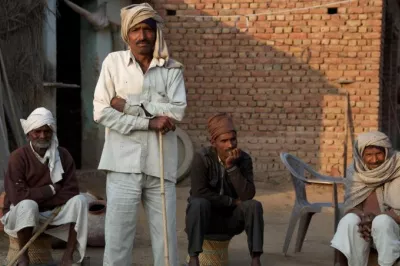What Will It Take for Payments Banks to Succeed in India?
Over the past year, the Reserve Bank of India has introduced innovation-friendly regulations, including the licensing of Payments Banks. The Payments Bank regulations were particularly noteworthy as they finally provide a framework for a variety of organizations with distribution muscle to provide payment and deposit services at scale in India. Despite these advances, wide-scale digital payment services remain unproven in India. If newly licensed Payments Banks are to succeed, they will have to overcome some basic challenges specific to the digital payment business. These include:
India’s cash addiction. India remains a cash-based society. There is an overwhelming preference for physical cash, even in urban centers where alternatives exist. Even the e-commerce leader, Amazon, offers cash-on-delivery, whereby goods are delivered to your doorstep and you hand cash to the delivery agent. The 2014 Intermedia Financial Inclusion Insights (FII) survey of 45,000 Indian adults found that 82% of adults consider cash to be the “best tool” for small- to medium- transactions and over 80% of respondents in both urban and rural areas receive remittances in cash and in person.
One option for migrating cash-based customers to digital accounts is to charge rock bottom digital transaction fees for basic P2P. Telesom Somaliland, for example, sought to migrate cash-based customers into digital channels by offering digital payment transactions for free which led to rapid uptake and usage, with the average Telesom customer conducting 40 digital transactions per month. Telenor Pakistan recently eliminated its digital transaction fees as well.

Photo Credit: Pamela Jones/Flickr
The over-the-counter (OTC) trap. India’s cash addiction makes it more likely that newly licensed Payments Banks might fall in what Microsave calls “the OTC trap.” An OTC transaction is where the customer does not have an account, but simply hands over cash to an agent who then facilitates the transaction on the customer’s behalf. Because OTC services solve a key pain point by giving customers the ability to transfer money instantly (the same pain point which fueled mobile money uptake in East Africa), it can become difficult to get customers to shift into account-based transactions. As we recently noted, 94% of mobile money users in Pakistan use OTC services rather than accounts. We are seeing similarly high OTC rates in Bangladesh. Our recommendation to newly licensed Indian Payments Banks would be to not accommodate cash-based transactions, even if it means lower transactions initially. The patience will pay off.
Low-cost domestic remittance alternatives. Latent demand for e-payments must be evaluated against the accessibility and quality of the alternatives. Compared to many other countries, Indians already have relatively low-cost remittance alternatives. An IFMR Research study of 274 domestic migrants and their families found that the average cost to make a domestic remittance (including both direct and indirect fees) across all channels was only 3.5%, with India Post costing 6%, informal hawala channels 4.6%, and banks 3.0%. To encourage digital account adoption, Payments Banks will need to price their domestic transfer services competitively and consider models like the “freemium” service offered by Telesom Somaliland mentioned earlier. The IFMR study also found that people use informal mechanisms but prefer more formal ones if they are more convenient. For example, half of hawala users said they would prefer to use other payment channels if they were available.
Large upfront investment and long road to profitability. The verdict from the international experience is clear: Payments Banks will need to invest significantly upfront to build a business correspondent or agent network and, if all goes well, it could easily take three to five years before the business is cash-flow positive. The GSMA’s recent study on mobile money profitability illustrates a general scenario where a mobile money service could break-even within 36 months. Even assuming a high growth deployment with an active customer base and increasing transaction volumes, businesses should expect positive EBITDA margins of only 2-5%. Indeed, it is likely to be closer to seven years before EBITDA margins reach 20%.
Figuring out partnerships with banks on credit-issuance. Given the reasonable quality of India’s informal payment solutions and preference for cash, Payments Banks may not be able to drive customers into digital accounts by offering payment services alone. We suspect large-scale migration of Indian customers over to Payments Bank accounts will require a more complete offering, including savings and credit services. Because Payments Banks cannot offer credit on their own, this will require partnerships with credit-issuing banks. Here, Kenya offers a useful template. As we learn in a forthcoming paper by Tamara Cook (FSD Kenya) and Claudia McKay (CGAP), Commercial Bank of Africa has successfully leveraged M-PESA’s 20 million mobile payment connections to grow its “M-Shwari” account base from 30,000 to 9.2 million in just two years. CBA has also disbursed 17.5 million loans through M-Shwari, 1.8 million of which are active. We are eager to see Indian Payments Banks exploring similar partnerships with credit-issuing banks. It might be useful to consider such partnerships even as Payments Banks are gearing up to apply for licenses due next week.
Payments Banks present an exciting opportunity for digital financial inclusion in India. We know that some major mobile operators, business correspondent companies, prepaid issuers and others are preparing their applications. We hope they have an eye on the challenges flagged here and are willing to learn from the experience of mobile money in other countries.




Comments
Congrats for capturing all
Congrats for capturing all the relevant points! Very nicely written good piece of advice for upcoming payment banks in India. Some points where I have concerns:
1. I do not completely agree with "not accommodate cash-based transactions" recommendation for payment banks as this will not allow customers to test the service. Also, it will act as a big entry barrier for initial users. OTC transactions can gradually be declined once the customers get used to the service.
2. Banks in India do not charge 3% of the remitted amount. Average charges by banks are around 1.5%.
Regards
Sachin
Thanks, Sachin. We strongly
Thanks, Sachin. We strongly doubt that you will be able to gradually decline OTC transactions. We know for a fact that businesses that have started with the same assumptions you have made about OTC have further conditioned customers away from electronic transactions. Even if customers are slower to adopt and face some friction, once they take on electronic transactions (we used to say after 5 transactions but not sure where that came from), you have created a stronger foundation for the other services you are likely to bring on. On the fees, those are both direct and indirect/other costs in the study but I agree with the broader point that fees are low. The question I would have is whether a payments bank can make money with domestic remittances profitable with very low fees (0.5%?) Or with "freemium" pricing and other creative approaches?
While the paper has captured
While the paper has captured viral points for the business and profitability of payment banks, it ignored the fact that with toning of existing infrastructure of BCAs and Banks, the end results could have been achieved. There is no need for introducing one more player to hawk around the incomes generated in financial inclusion. I wonder, what business propositions the big houses have seen in payment banks, and is it that banks have agreed that they have failed to implement FI and joining hands with big houses to handover FI to the PBs? Many Corporate BCs and their investors have imagined hordes of money in FI and when they are not getting profits as expected in a short time, have either exited (Bartronics etc) or changed the model(FINOPAYTECH) and some are shedding the staff to reduce expenses. The more fact that FI activities can not sustain on transaction fee alone and there is necessity to add more business facilitation activities with controlled wage structure wages of Corporate BCs, people have yet to realise and revamp the structures. Banks in their own way identified FI as mere compliance with GOI and without ownership leading the FI towards its downfall. The BCs are not paid in time and Top Executives want to make FI an income generating arm of Business without whole hearted involvement are making the FI not to meet its goal. The only sufferers in this entire fiasco is those under Poverty line who looks at all tiers of FI implementors with hope and aspirations. When Banks and BCs have so far failed to meet the goals of FI, I don't think Payment Banks will do wonders.
As India comes close to the
As India comes close to the first few Payments Bank to be set up,one is getting to see the contours of business-model that might emerge in terms of its viability.Kabir is spot-on in focussing on the digital account and ,digital money which alone could lower remittance cost compared to other modes.The Telcos have digital technology and many are offering M-wallet service and therefore for them it's a just a hop to becoming Payments bank. To my mind it seems India Post is rousing from its slumber and adopting Tech. in a big way.They have enormous depth and trust. They can offer 'Freemium' by collaborating with telcos and bring real value for money especially small monies.
Add new comment